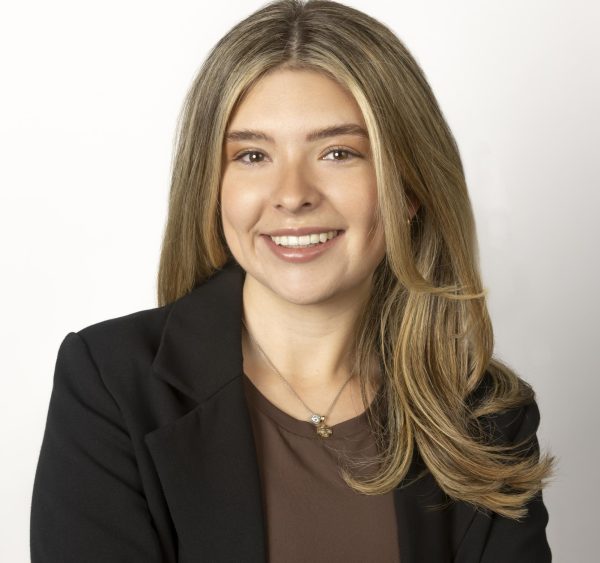This story has been republished due to the death of Joan Gosnell.
Tucked away in the DeGolyer Library lies SMU’s most precious archives. These prized possessions continue to be discovered by the SMU community as the years go by. Joan Gosnell, university archivist, is one of the many important individuals in charge of preserving the history of SMU. Gosnell spoke with The Daily Campus editor, Cloi Bryan, at the DeGolyer Library to talk about SMU’s historic archives of SMU and campus life.
Cloi Bryan: What made you want to pursue a career in archival history and what
inspired you to get into this field?
Joan Gosnell: Well, it’s real simple. I went to college at a very small school in central
Pennsylvania, and my junior year, I wanted to do an internship in Washington, DC.
And I thought, “Oh, I’ll do an internship in history, because I’ll never get a job in history.” I ended up getting an internship at the National Archives and falling in love with the idea of collecting documents and learning about something in-depth.
Bryan: When it comes to preserving various archival pieces for SMU, how do you and the other librarians gain access to those certain items? And how has SMU preserved these pieces for so long?
Gosnell: Originally, Dorothy Amman, who was the very first librarian, started collecting materials, and it was sort of kept in the library. Then the university started an archive in the 1970s, and we started collecting more and more, but some of our most recent things are truly because of the first librarian. She kept the first newspapers and things like that. Now we get things through donations from faculty, staff or alumni. We get materials transferred directly to us from development. We get a lot of photographs from development.
Bryan: How do you store all of the archives? And what kind of archives are there? I know there are photographs and news clippings.
Gosnell: Correspondence, speeches, reports, videotapes, audiotapes, oral histories, all sorts of things. Generally, we store it here in the DeGolyer, but recently the archives have been transferred off-site because of the Trevor Rees-Jones Library that’s coming to campus. So they’re right now off-site, except for about four or five collections, which are our most precious and most used.
Bryan: What would SMU’s most prized archive pieces be?
Gosnell: The records of the university that have the minutes from the educational
commission that started SMU in 1911. Those would be our most prized possession. The course catalogs come in a second because they tell us the official history of the university.
Bryan: Are the course catalogs the different classes that were at SMU?
Gosnell: They were the classes that were taught each year, but the course catalog had
a lot more than that. The course catalog had everything from a history of the school, to
what the tuition cost in the early days, to a list of graduates in the very early days, to lists of all the faculty that taught as well as all the different classes. We’ve digitized
them so they’re available online now. It was sort of SMU’s marketing piece in the very early days.
Bryan: Good promotion for SMU back then!
Gosnell: Yes. Now it’s all of course, all online. And it’s a database that you can use,
but before, it used to be an actual book.
Bryan: Are you preserving current things that happen around campus for the years to
come?
Gosnell: Yes. Currently, one of the things we’re doing is collecting all the press releases that Development and Public Affairs puts out as electronic files. They used to be printed out and typed out and sent out to newspapers around the country and the neighborhood. But now they’re done electronically, and we’re starting to collect those electronically.
Bryan: Is it hard to keep track of things through an online record?
Gosnell: Yes. I need more help with the electronic records. When they’re just paper and they’re in a box, they don’t go anywhere, but electronically you have to make sure they stay safe and that they’re not being messed with. Keeping them safe and secure is a lot harder.
Bryan: What does the day in the life of an archivist look like here at the DeGolyer?
Gosnell: Well, there’s a bunch of stuff we do. Some of it is answering reference questions. When faculty, staff, outsiders and alumni ask questions about the university archives, we answer those or help students on how to answer them. We do play with the actual records. So keeping them in order, re-folder them, writing finding aids, which is how you find the
materials…to working on some of our digital projects, including the Voices of SMU, which is an oral history of students of color, at SMU.
Bryan: How important is it to preserve artifacts like these, and why is it important for these artifacts to continue to live on?
Gosnell: It’s important because it answers a lot of questions for the administration when they need to know about the history of the university. For example, we did a history of what the student code was in the earliest days to the most recent, that was a few years ago. Having that available for the administration is really important. Having that available when somebody emails and says, “My grandfather went to SMU, can you find a picture of him?” That builds bonds between the community and the school. People want to know about their
ancestors– that’s important to be able to document correctly.










